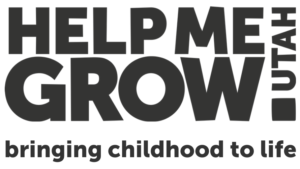Your baby was born ready to listen to you. Long before babies can talk, their minds are busy analyzing the sounds they hear, and they are beginning to understand language. Your words are like building blocks creating connections in your baby’s brain! When you respond to the sounds they make, you’re also helping your baby grasp the back-and-forth of conversation and communication. So talk to them about everything, and make sure you listen and respond when your baby tries to talk to you.
It’s time to talk
The Science
What about Baby Talk?
“Parentese,” or “baby talk,” is the higher-pitched, sing-song style of talking that comes natural to many parents — and it’s great for your baby! It helps them recognize and follow your voice. It feels comforting and loving. But talking to your baby in “baby talk” doesn’t need to include simplified or nonsense words or backwards grammar. Their brains can handle a rich vocabulary and are ready to start to understand complex language.
How to do it
Talk and talk, and talk some more
It can feel a little unnatural to talk to a baby who may not seem to be listening, but they are listening, and your words are building their brain! So try talking to your baby as much as you can. Whether you’re changing a diaper or making dinner, you can narrate what you’re doing. Going on a walk? Talk about what you see or point out and describe trees, flowers, or birds. Talk through all the steps of getting your baby dressed or bath time or bedtime. The more you talk, the more natural it will feel. You will not only build your baby’s brain, but you will help them feel your love.
5b45 + Nutrition
Healthy Talk
Mealtimes are a big part of your everyday interactions with your baby, and you can talk about all of it! Chat about colors of fruits and vegetables, talk about tasting (sweet, sour, bitter, salty) texture (crunchy, soft, smooth) and shapes by using healthy foods can be a learning opportunity to talk.
Try the fruit smoothie guessing game—Use a blender to blend small amounts of a single item and have your child try to guess the fruit. Is it sweet, sour, bitter.
Spice paint—Use water mixed with spices to create paint colors for creating fun artwork and guess the spices used for each color. For example, turmeric/yellow, cinnamon/brown, ginger/light yellow, mild chili powder/red.
Paper bag guessing game—Place fruits, vegetables or grain in a bag and have the children feel and guess what the item is. A blindfold can also be used to smell or taste the items and guess what it is!
Suggested Age Range: 0-1
Vroom Tip #818
Babbling Baby
Does your child babble or make lots of sounds? This is a first step in learning to speak. Set these sounds to music. If they’re saying, “Ba, ba, ba,” sing this sound to “Baa, Baa, Black Sheep” or another tune. Watch their eyes light up. Guess what? Their brain lit up, too!
Your child will love the fact that you’re singing along with them. By doing so, you and your child are having a conversation with sounds, which helps them listen carefully and copy you. This gets them ready for conversations with words, which will lead to better reading skills.
Vroom Tip #31
Together Time
Take a few minutes today to turn away from technology and just be with your child. You may want to sing, hum, talk, make noises back and forth, make funny faces, or just snuggle. We all need a little time just to be together.
Technology can be wonderful. But a small amount of time—just for you and your child—can be a good break from technology and wonderful for both of you.
Vroom Tip #30
Take Time To Watch
Take a minute today to watch your child. Pay attention to what they look at. How do they move? What do they sound like? What are they learning? Even when you’re busy, responding to what they are learning deepens your connection with them.
When you’re in tune with your child, you’ll be able to pay attention to their needs and interests. This deepens the trust between you. Your child needs this security to reach out into the world to explore, experiment, discover, and learn.
Suggested Age Range: 1-2
Vroom Tip #566
Scenery Change
Mealtime for your child? Move their high chair around to face different directions so they get a different view of the world. Talk to them about this new backdrop and what’s there. “We’re looking into the kitchen now” or “let’s look out the window.”
A change of scene invites your child to pay attention and focus on what is going around them. These are thinking skills they will use for the rest of their life.
Vroom Tip #36
Sound Searchers
Pay attention to the sounds you’re hearing and talk about them with your child. “I hear a bird tweeting. Do you?” Try to find the bird. Do this with fire trucks or cars going “vroom!” Pay attention to what they’re listening to and ask them, “What do you hear?”
Children learn through their senses and through games like Sound Searchers. Using words about the sounds you’re hearing helps your child begin to listen to the differences in sounds and the words that describe them.
Vroom Tip #818
Babbling Baby
Does your child babble or make lots of sounds? This is a first step in learning to speak. Set these sounds to music. If they’re saying, “Ba, ba, ba,” sing this sound to a favorite tune. Watch their eyes light up. Guess what? Your baby’s brain lit up too!”
Your child will love the fact that you’re singing along with them. By doing so, you and your child are having a conversation with sounds, which helps them listen carefully and copy you. This gets them ready for conversations with words, which will lead to better reading skills.
Suggested Age Range: 3-4
Vroom Tip #389
In Plain Sight
Play hide and go seek with things in plain sight! Ask your child to help you find everyday things. When you open the fridge, say, “I can’t find the milk” and ask them to point to it. You can do this with items all over the house!
When your child looks for and finds things with your prompting, they’re learning to focus. They’re also learning new words when they connect objects with words.
Vroom Tip #152
Use Your Words
Does your child get upset and start to cry and whine? Remind them to use their words to say what is bothering them or what they want. If they’re too upset to talk, try to guess what they want to say until they let you know you “got” it!
Helping your child learn to communicate their upset feelings in words is one of the most important tools you can give them for managing these feelings, and expressing themself in ways that can be understood and responded to.
Vroom Tip #49
Category Convos
Tell your child about a favorite food. Ask them to name a food they like that’s in the same category, like fruit, but different. Keep count of how many different things you both like in the same category. Play the same game with something else, like clothes!
This game is teaching your child about categories; things that are the same in important ways, though different in others. They’re also learning about your likes and dislikes compared to theirs, helping them learn about other people.
Suggested Age Range: 3-4
Vroom Tip #136
Size Search
Invite your child to hunt for objects of different sizes. How many small things can they find? What about big things? Make it harder and ask them to find things that are medium-sized or huge. Talk about what they see and what is the same and different.
When you and your child take turns and talk about ideas like big and small and same and different, you’re helping to develop their vocabulary. They’re also beginning to understand math and science ideas that are important now and in the future.
Vroom Tip #5
Rhyme Time
Pick a word, like cake, and take turns saying words that rhyme with it. Keep going until you run out of words that rhyme, and then let your child pick a word to play with. See if you can come up with silly ones to keep it fun like slinky, pinky, stinky.
Rhyming or word guessing games, like this one, help your child detect differences in sounds. This will help with reading and writing later on.
Vroom Tip #67
Today’s Feelings
Ask your child to talk about their day using feeling words like happy, excited, and sad. Try questions like, “Was there a time when you felt frustrated today?” Ask them to make faces that express these feelings. Share your day as well.
When you take time to talk about feelings with your child in fun ways every day, you make your relationship stronger. You’re helping them connect feelings and actions, too. Once your child understands their emotions, they can better relate others.
Suggested Age Range: 4-5
Vroom Tip #219
Faces and Feelings
Next time you’re stuck in a waiting room with your child, pick up a magazine. Point out a face in one of the pictures and have them copy it. Ask them what they think the person is feeling. Discuss with them when both of you might have felt this way too.
When you talk about your own and others’ feelings you’re helping your child learn to take a new perspective, which is helpful in getting along with others.
Vroom Tip #24
Tomorrow Talk
Today’s the perfect time to talk to your child about tomorrow. Find out what they hope tomorrow has in store for them: “If you could do anything tomorrow, what would you most want to do?” Ask follow-up questions to stretch the moment. It’s a good way to learn about their hopes for the future.
Asking your child to think about the future helps them think ahead. These kinds of questions help them think flexibly to make up their own answers and be creative.
Vroom Tip #219
Faces and Feelings
Next time you’re stuck in a waiting room with your child, pick up a magazine. Point out a face in one of the pictures and have them copy it. Ask them what they think the person is feeling. Discuss with them when both of you might have felt this way too.
When you talk about your own and others’ feelings you’re helping your child learn to take a new perspective, which is helpful in getting along with others.
Dig Deeper
Check on your child’s development!
Language development begins at birth, and by the preschool years many children have vocabularies that include several thousand words and increase at a remarkable rate. Completing a developmental screening can help you understand if your child is hitting important communication milestones along the way. You can complete a screening from your doctor or child care provider or through Help Me Grow Utah.

Need more help?
Check out our community resources page.

